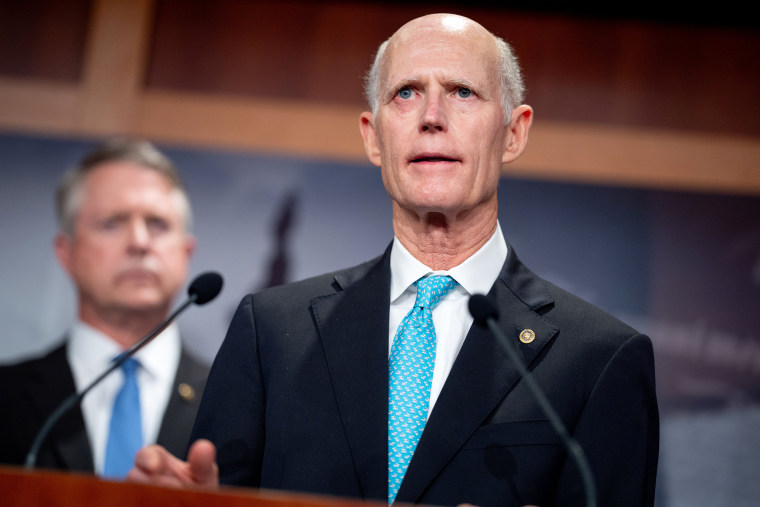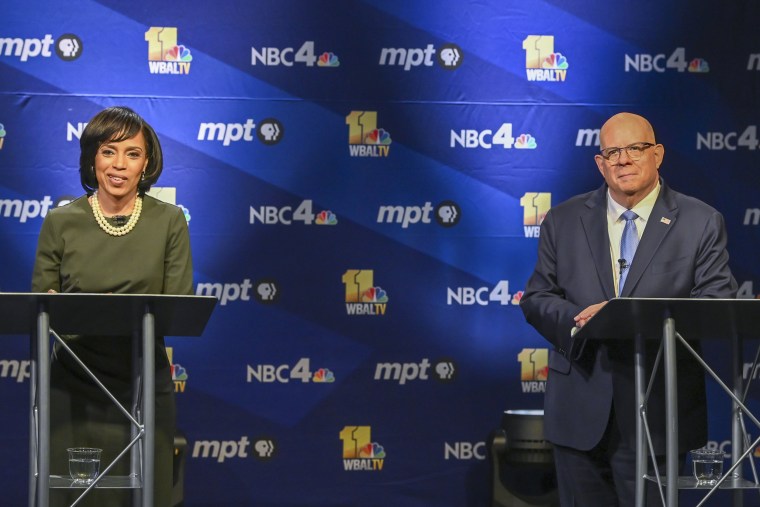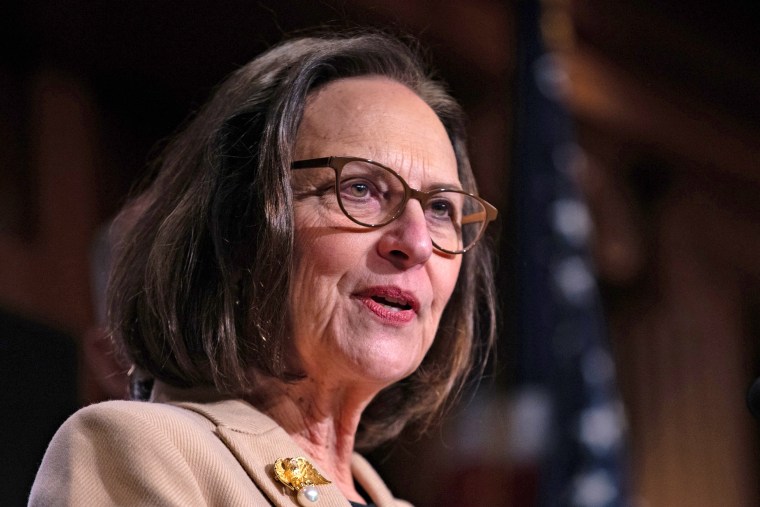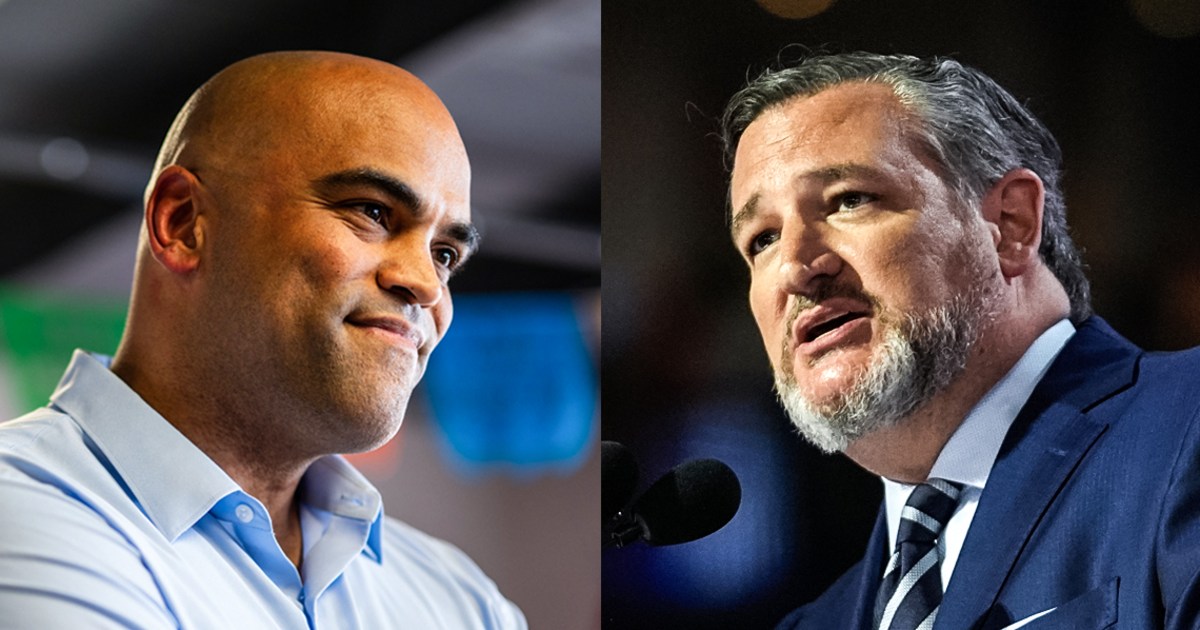For the last two years, the battle for the Senate has focused on a handful of closely watched states. But weeks before Election Day, Democrats and Republicans are pouring money into the edges of their battleground map, placing bets on long-shot chances to flip an extra seat into their column.
And they are long-shot races, especially during a presidential election, when ticket-splitting isn’t as common as it used to be. In some cases, challengers have outraised incumbents. But in all four races — Florida, Texas, Nebraska and Maryland — one of the presidential candidates, former President Donald Trump or Vice President Kamala Harris, is expected to carry the state easily, making it even harder for a member of the other party to flip the seat.
Still, the parties see slivers of opportunity. In Maryland, Republicans are hoping popular former Gov. Larry Hogan can pull in the crossover independents and Democrats who helped him win two terms. In Florida and Texas, Democrats are focusing on state abortion bans to try to push beyond their recent losses in those states. And in Nebraska, an independent is running an unusual challenge against a two-term Republican senator.
In Texas and Florida, the Democratic Senatorial Campaign Committee last month said it would to be launching a “multi-million dollar investment” in TV ad spending.
Those races, where Democratic Rep. Colin Allred is challenging GOP Sen. Ted Cruz in the Lone Star State and former Democratic Rep. Debbie Mucarsel-Powell is challenging GOP Sen. Rick Scott in the Sunshine State, have certainly received their fair share of national attention.

Allred in particular has massively outraised Cruz, propelling his campaign to spend $23 million on campaign ads in September and almost $10 million in the first 10 days of October alone, according to AdImpact, an ad-tracking firm.
Cruz’s campaign spent almost $5 million on ads in September and $4 million in the first 10 days of October. But super PAC spending in his favor and ads paid for by his leadership PAC and the state’s Republican Party boosted him too.
The spending disparity is less stark in Florida, where in September Mucarsel-Powell’s campaign spent $8.6 million and Scott’s campaign spent $2.1 million. In the first 10 days of October, the former congresswoman’s campaign had already spent over $5 million, while Scott, a wealthy businessman who has poured his own money into his political campaigns, spent just $1.7 million.
But Scott’s campaign has booked an additional $5.2 million in campaign ads through Election Day, with more to come.
Despite promises to spend millions in both states, the DSCC has so far not made any ad reservations in Florida. And in Texas, it booked a coordinated ad buy alongside Allred’s campaign worth $1.6 million.
“There’s been a lot of money spent in Texas, but the truth is, if [Democrats] are going to compete, they’re going to need to spend a lot more than they’ve spent. This is true in Florida too,” a national Republican strategist told NBC News, pouring cold water on the idea that Democrats are seeing a late surge in their favor in either state.
Still, strategists on the ground point to several factors outside of spending as reasons why these races could shift in their favor.
In Florida, voters will have their say in November on two ballot measures that Democrats say could boost turnout in their favor — one that would legalize marijuana and one that would expand abortion access. Florida currently bans abortion after six weeks, as does Texas.
A Mucarsel-Powell campaign spokesperson told NBC News that Scott “wrapped his arms” around the state’s abortion ban when it was signed into law, and that could be a liability for him among voters planning to vote to expand access.
And, in the wake of two hurricanes that left destruction in parts of the state, the same spokesperson said they plan to hit Scott, who was the state’s governor before he ran for Senate, on the property insurance crisis plaguing the state.
In TV ads, Scott has hit back. In one ad, he addresses voters directly to the camera, telling them that he and his daughter “both agree [in vitro fertilization] must be protected for our family, for every family.”
The ad counters an argument by national Democrats that Republicans who back abortion bans will also seek to restrict access to IVF treatments.
In another ad, he goes on the offensive, slamming Mucarsel-Powell as a “socialist” who wants “higher taxes on families.”
In Texas, Democrats have hammered Cruz on abortion and on a 2021 trip he took to Cancun while the state faced an energy crisis in the wake of a massive winter storm.
Republicans in the border state have responded by boosting Cruz’s credentials on border security, with one Cruz-sponsored ad featuring the Harris County district attorney, a Democrat, telling voters, “I’m supporting Ted Cruz because Democrats and Republicans must work together to solve Texans’ problems now.”
Cruz and other Republicans have also hit Allred on the issue of transgender women and girls competing in sports.
In one ad paid for by Cruz’s campaign, a narrator blasts Allred for “pushing an extreme liberal vision for America: boys in girls locker rooms, boys in girls bathrooms, boys in girls sports.”
Earlier this week, Allred responded, telling voters directly to camera in his own ad, “Let me be clear. I don’t want boys playing girls sports or any of this ridiculous stuff that Ted Cruz is saying.”
Allred’s response to Cruz’s attacks “shows it was a good message” that resonated with voters, the national GOP operative said.

Despite efforts by Democrats to pour money and attention into these races, they still haven’t become the competitive nail-biters that the races are shaping up to be in Republican-leaning Montana and Ohio and swing states Michigan, Arizona and Pennsylvania.
The nonpartisan Cook Political Report with Amy Walter still rates Florida’s Senate race as “Likely Republican,” though earlier this month the group moved Texas’ Senate race from “Likely Republican” to “Lean Republican.”
The week before that, the group also shifted Nebraska’s Senate race slightly away from Republicans, from “Solid Republican” to “Likely Republican,” even though that state leans heavily in Trump’s favor at the top of the ticket.
That move came as independent Senate candidate Dan Osborn gained ground on GOP Sen. Deb Fischer in recent public and internal polls.
In Maryland, the Senate race features a similar dynamic, with the race rated by Cook as “Likely Democrat,” even though Harris is expected to win there easily.
Hogan has mounted a formidable challenge against Prince George’s County Executive Angela Alsobrooks in a race that she would be expected to easily win if she were facing any other Republican.
Although Alsobrooks leads in public polling, one source close to her campaign told NBC News that it’s “definitely a competitive race,” adding, “I don’t underestimate a former governor of eight years.”
And Hogan, though running as a Republican and working with the National Republican Senatorial Committee to run joint TV ads, has painted himself as an “independent, common sense leader” and a “maverick” who promises to be a “key swing vote that can stand up to the crazy on both sides, to the extremes of both parties.”
“We’ve run an aggressive race, as has Larry Hogan,” the source close to Alsobrooks added, but pointed to the county executive’s main argument against the former governor: that he would grant Republicans a Senate majority.
“As a person, I like Larry Hogan,” Alsobrooks said at a campaign event in September. “But that is not the question we are answering in this election. We are determining which side controls the Senate.”

In Nebraska, Osborn has tried to run the race as a true independent, rejecting endorsements from figures in either party. But Democrats have decided not to put a candidate up, tacitly clearing a lane for Osborn and giving him the opportunity to build a coalition of Democrats, independents and some Republicans.
“The polls in my race match up with what I’m seeing across Nebraska,” Osborn told NBC News in a statement, adding: “Our message of standing up for small businesses, family farmers, and working families is resonating because Nebraskans want a senator who listens to them, who shows up for them, and who will be a strong voice for them in the Senate.”
Republicans in the state have sought to paint Osborn as a Democrat in disguise, pointing to independent Sen. Bernie Sanders’ support of a 77-day strike Osborn organized while working as a mechanic at a Kellogg’s plant in the state in 2021.
Democrats have fought back, noting Osborn’s strike was supported by a bipartisan group of politicians, including then-GOP Gov. Pete Ricketts, who called on the company to negotiate with the striking workers in December of that year.
Ad spending there has remained relatively low, at least compared to other Senate races deemed competitive.
In September, Fischer and her supporters spent $1.8 million backing her and blasting Osborn, while the former union worker and his backers spent $2.7 million.
Republicans say the race will reset itself in Fischer’s favor ahead of Election Day, pointing to Trump’s strength in the state. The former president endorsed Fischer last month.
In a statement, Fischer’s campaign manager, Derek Oden, pointed to an internal campaign poll conducted earlier this month, which showed Fischer leading Osborn by 6 points, toward the edge of (but still within) the margin of error. (Fischer has won each of her two Senate terms by double digits.)
“We expect this positive trend to continue as time goes on and more Nebraskans learn that Dan Osborn isn’t an independent–he’s a liberal Democrat in disguise,” Oden said in a statement.
